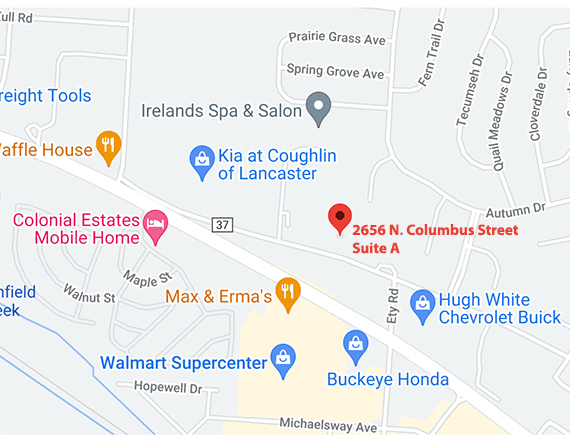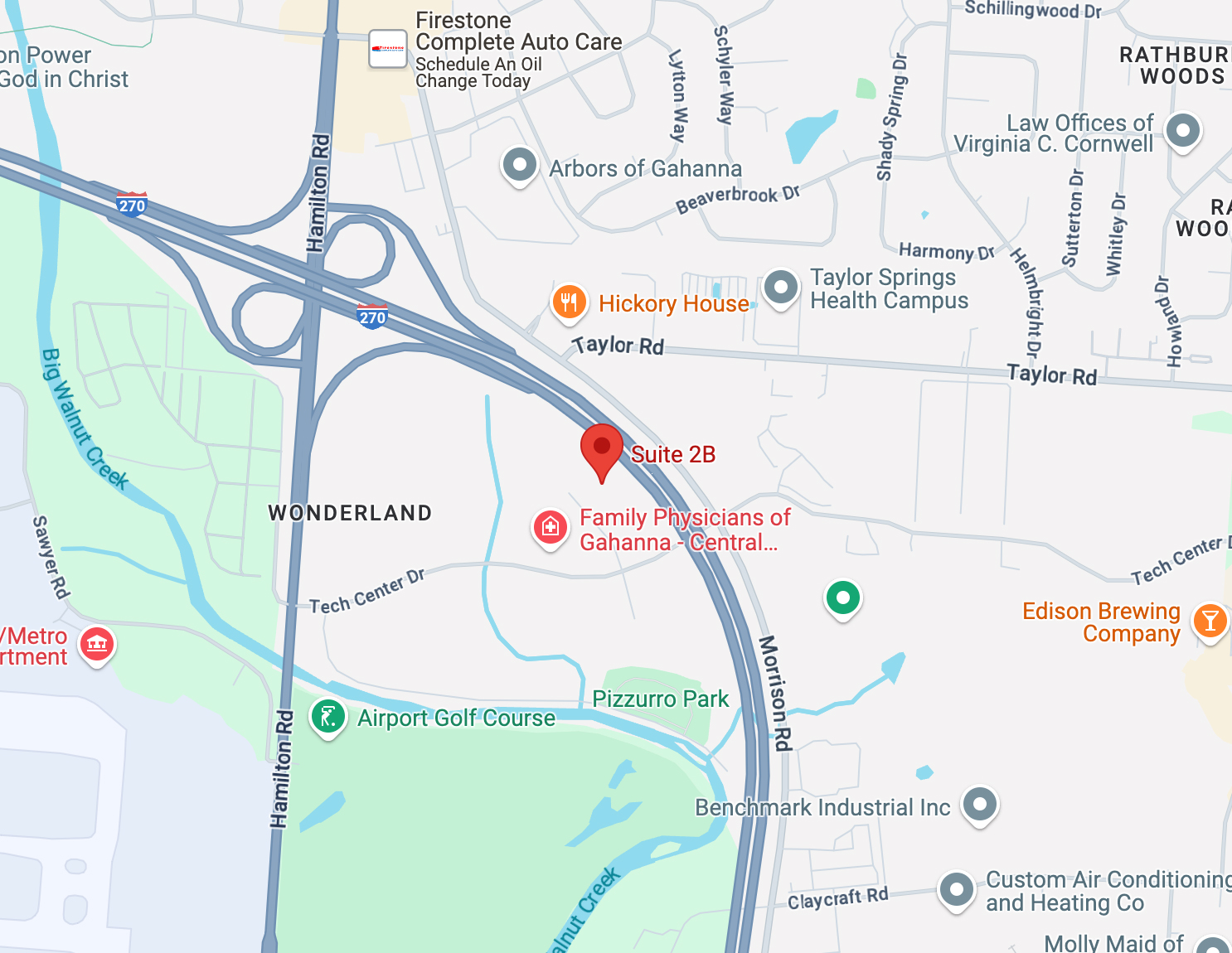
Facelift Surgery & Facial Rejuvenation
Conveniently located to serve Columbus, Lancaster, Pickerington, and Canal Winchester
Jump To
Conveniently located to serve Columbus and Lancaster
Facial wrinkling and sagging skin – they happen to the best of us. Fortunately, Dr. Lichten can perform facelift surgery in Columbus, Ohio to create a comprehensive improvement in the appearance of your mid to lower face region, including the cheeks and jawline. A facelift creates a tightened and rejuvenated facial contour, restoring a more youthful look.
“I felt totally at ease. Everyone was so nice and friendly that it was as if I had known them for a while…Probably the nicest staff I’ve ever dealt with.”
Facelift Candidates
As gravity takes its toll, it causes sagging skin in the jowls, the neck, and around the mouth. In addition, as we age, we lose volume in our cheeks and midface, creating a more hollowed-out, or even gaunt, look.
Fortunately, Dr. Lichten can perform facelift surgery in Columbus, Ohio to create a comprehensive improvement in the appearance of your mid to lower face region, including the cheeks and jawline. A facelift creates a tightened and rejuvenated facial contour, restoring a more youthful look.
Ideal candidates for a facelift procedure are in good overall health, with chronic medical conditions well-controlled. Certain pre-existing medical conditions can increase the likelihood of surgical complications. Dr. Lichten will go over these conditions during a consultation, and patients with these conditions may not be cleared for the procedure. The best facelift candidates have realistic expectations in terms of results.
The Benefits of a Facelift
The facelift offers improvement in the removal of wrinkles and facial folds, oftentimes smoothing the lines that form between the nose and mouth and lifting sagging mid-face skin. A facelift also may eliminate or reduce large jowls which significantly strengthens the appearance of the jawline. Facelifts can also address extra fat or separated muscles in the neck.
Our patients often choose to combine their facelift with other facial procedures such as brow lift and eyelid surgery, Fraxel repair and Tripollar Apollo and liposuction of the chin or Kybella injections. In addition to facial rejuvenation, many people also consider body contouring procedures such as liposuction to get their looks back on track.
Choosing the Right Surgeon
The most important thing in the process is choosing the right surgeon for you. You should be able to talk honestly and feel comfortable. If you get a consultant talking to you about the procedure and only talking to the surgeon for 2 minutes, you should run. The patients who get the best results are the ones who trust their surgeon, communicate effectively throughout the whole process, and follow their pre and post-operative instructions.
What Is a Deep Plane Facelift?
During the facelift consultation, Dr. Lichten will help decide which facelift option is best for the patient. It is important to understand the techniques that are in use today. One facelift technique that many surgeons perform is called the deep plane facelift.
This facelift method has been around since 1990 and has only become more refined ever since. Its most noteworthy aspect is how it deals with the superficial muscular aponeurotic system (SMAS).
While many facelifts only address the superficial skin or lift the SMAS layer and the skin, this method involves lifting from the deeper tissues. Ligaments are released, and the deep facial musculature is repositioned in order to create a smoother, more even surface. The result is a rejuvenated and youthful look that lasts.
However, not every patient requires a deep plane facelift. It can be considered overly invasive in many cases, and it also carries a risk of facial nerve damage.

The Facelift Procedure
During a facelift, or “rhytidectomy,” Dr. Lichten removes extra skin from the cheeks, jowls, and neck and tightens the underlying muscles. I make incisions around the ear in the hairline and sometimes under the chin. If there is extra fat under the chin or in the jowls, he will often combine a facelift with a liposuction procedure during the same surgery. Dr. Lichten can also do a fat transfer to add volume back into cheeks to create a younger, more rounded cheek appearance. Facelifts are done as an outpatient procedure, which means you will go home the same day. Dr. Lichten usually performs facelifts under general anesthesia.
The doctor will see you back in the office the day after your surgery to change your dressing, remove your drain and give you a more comfortable compression garment.
The end result is a more refreshed, youthful appearance that still looks like you.
Facelift Before & Afters


Facelift Recovery
There will be some bruising and swelling around the face. Bandages may be placed around the face to help manage to swell. Small tubes may be inserted to help make it easy to drain any fluids that may build up in the area. These tubes will be removed during a follow-up visit after your facelift.
Most patients will need around two weeks of recovery before they feel comfortable resuming their normal activities. There may be some numbness and tightness around the face that will take several months to subside. It will take some time for the full results of your facelift to appear.
Facelift Cost
Dr. Lichten can let you know what the expected cost of your facelift in Central Ohio will be during your consultation at our office. Our team can also go over the payment options we offer and let you know about the financing options available to you.
Schedule a Consultation
At Central Ohio Plastic Surgery, we are dedicated to providing our patients with personalized solutions for their aesthetic needs. If you are bothered by the aging appearance of your face and would like to know if a facelift can provide you with the results you are looking for, contact our office today to schedule a consultation with board-certified plastic surgeon Dr. Jason Lichten.
Click here for an article by Dr. Lichten about facelifts.
FAQ
+ How is the facelift different than other surgeries? Why is it so important to pick the right surgeon?
Dr. Lichten works hard so that his facelift patients typically look like younger, more refreshed versions of themselves. Because the structure of each person’s face is different, facelifts require a different type of artistry than body surgeries. No two facelifts are the same. Facelifts are actually a combination of techniques to lift the skin and underlying muscles and to restore volume, so there is no quick, right answer for everyone. You should consult with a board-certified plastic surgeon who will customize and tailor the right procedure or combination of procedures for you. There is no quick one-size-fits-all with facelifts. Some patients need a more vertical lift while others need to be pulled back more, while still others need a rejuvenation of the midface. With all facelifts, the goal is to restore facial harmony and balance.
+ With all of the innovations like facial fillers and non-surgical options like Fraxel re:pair, TriPollar Apollo, and Kybella, why should I get surgery?
With all the advances in technology in the last ten years, Dr. Lichten‘s patients have more options than ever to prolong surgery. The fact is, however, that you still can’t get surgical results without surgery. Also, Dr. Lichten often uses Fraxel re:pair during facelift surgery, because a facelift will address the underlying structures of the face and neck, and can tighten the skin, it does not affect the tone and texture of facial skin. Combining Fraxel re:pair with a facelift tackles both issues at the same time, creating a fresh new skin with fewer wrinkles and a tighter look. CoolSculpting is an effective option for non-surgical fat reduction from areas like the chin and neck. However, it cannot tighten loose skin or underlying muscle tissue, and it cannot address facial wrinkles. Because of this, it is not an appropriate alternative to a surgical facelift. The TriPollar Apollo is a great option for patients who are not ready for surgery – either financially or from a recovery perspective. It can tone and tighten the face and neck, and many of Dr. Lichten‘s patients are very happy with those results. It is a good tool for some patients, enabling them to prolong surgery. Facial fillers like Juvéderm and Restylane are great at what they do, but they do not treat the same issues that a facelift corrects. Fillers add volume to the face, which does result in tighter skin, but they cannot lift sagging jowls or firm the loose skin on your neck. Also, fillers tend to last for about a year, while facelift results can be ten times that long. Finally, Kybella is wonderful for treating excess fat under the chin, but it cannot tighten the skin, nor does it affect the face itself. Kybella is strictly used under the chin.
+ How long will a facelift last?
A good facelift will turn back the clock for ten years. Of course, however, you will start aging again immediately after the surgery. There are a lot of factors that go into keeping your facelift results as long as possible. As always, the sun, aging, and pollution will all continue to take their toll on facial skin, even after surgery. Good skincare and, of course, sunscreen, will maximize your results. We will educate you on the best ways to keep your face looking beautiful.
+ Where are the scars?
For women, Dr. Lichten can typically hide facelift scars above and behind the ears in the hairline. Because men usually have less or no hair on their heads but more facial hair, the doctor will place men’s facelift scars in the most inconspicuous place possible. Dr. Lichten will place other scars in the crease behind the ears. There will also be scars that appear as fine lines in front of the ear and under the chin.
+ I hear so many different names for facelift procedures. What do they all mean?
Facelifts, more than any other plastic surgery procedure, have lots of different names for different techniques. There are all sorts of names, like SMAS, MACS, Short Scar, Necklift, Skin Only, Sandwich, Deep Plane, and Endoscopic lifts. The bottom line is that all these techniques are aimed at achieving the same goal of facial rejuvenation. Dr. Lichten will look at you and figure out what combination of these techniques is best for you. The variety of techniques and the personalization required for facelifts make it crucial that you have a qualified physician perform your surgery. Make sure you have a board-certified plastic surgeon who is familiar with each of the techniques and can determine which is best for your particular needs and goals.
+ Is a facelift the procedure I really want? Do I want a neck lift, eyelid lift, or brow lift instead?
The term “facelift” is actually technically incorrect. You will see the biggest impact of a facelift on the lower portion of your face and your neck. Most people define the “face” as going from the forehead all the way down to the chin. A facelift, however, starts below the eyes and extends down to the neck. Dr. Lichten‘s facelift patients see the biggest improvement in the angle of their chins to their necks, a tightening of their jowls, and a reduction of extra skin on their necks. If you are looking to improve your eyes or forehead, you actually want either a blepharoplasty (eyelid lift) or a brow lift. In addition, crows feet and lines around the mouth can be effectively managed with Botox and facial fillers like Juvéderm and Restylane. A neck lift is actually the most similar to a facelift. The location of the incisions is similar. The biggest change is that in a neck lift, Dr. Lichten does minimal work on the cheeks and jowls, focusing primarily on the neck.
+ I keep seeing ads for “one-day recovery” facelifts or facelifts with special names indicating that they will work faster and better. What is the deal?
If you see a “facelift” on TV that is being advertised by someone other than a Board Certified Plastic Surgeon, you should be very cautious. Dr. Lichten has found that those procedures tend to fall into one of two categories – either they are (a) a lot of money for very little result, or (b) a fancy name for the same procedure that surgeons have been using for years. The doctor does not perform these procedures because he finds that his patients get more value and better results with a standard facelift.
+ What can I do to reduce the risks of having a facelift and improve my chances of getting the best result?
During your pre-op appointment, we will give you a list of medications to avoid before and after surgery to reduce the risks of bleeding and bruising. In addition, Dr. Lichten asks all of his surgery patients to stop smoking for four weeks before and four weeks after surgery. This is particularly important for his facelift patients. Smoking and exposure to cigarette smoke can constrict the blood vessels in the skin, which can cause scarring. After surgery, you will need to keep your head elevated for several days. This will help to reduce bleeding, swelling, and bruising. In addition, you will need to move around so you can reduce the risks of developing blood clots in your legs.
+ I’m worried that I will look like those celebrities who are pulled way too tight and look like they are permanently in a wind tunnel.
Most board-certified plastic surgeons have moved on from the old, outdated facelift technique where they pulled facial skin overly tight. Today’s facelift techniques focus more on the contours of the face by removing fat and tightening muscles, with less emphasis on removing the skin. These new techniques result in a more natural look.
Related Posts






